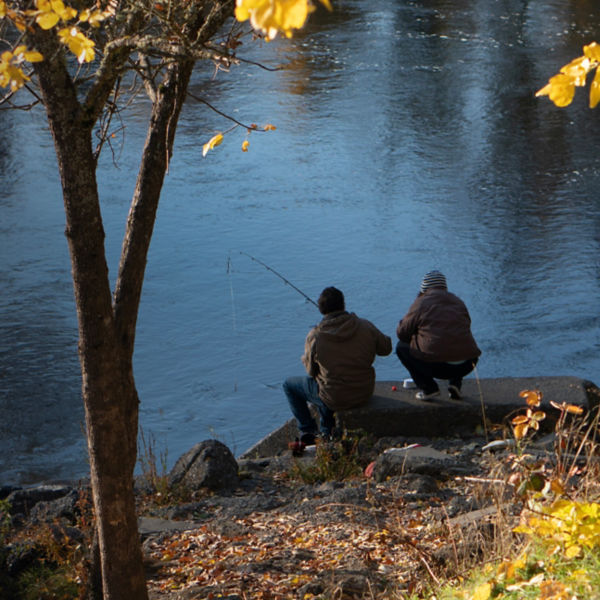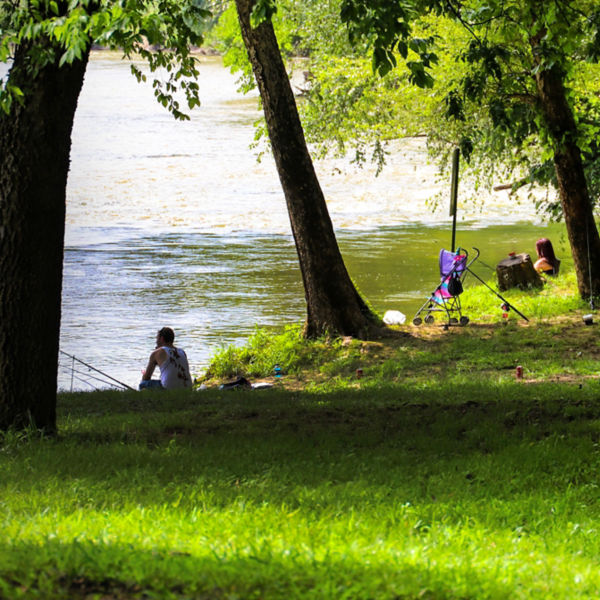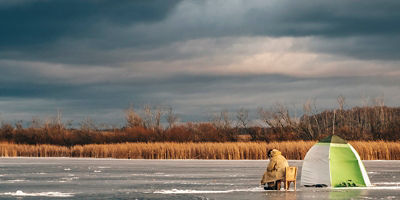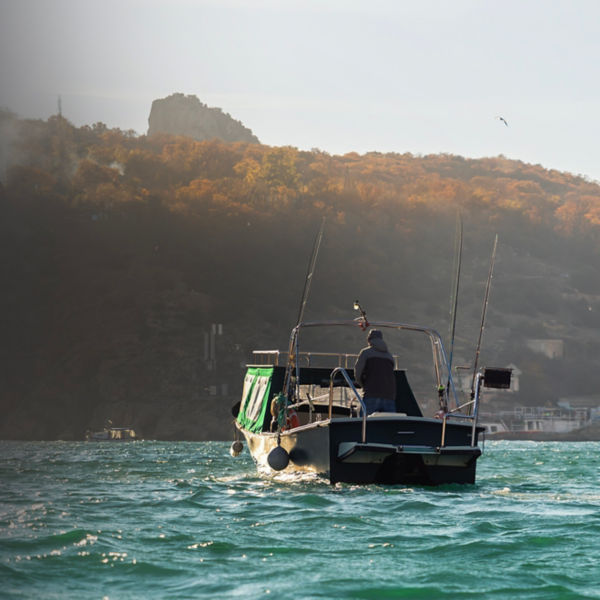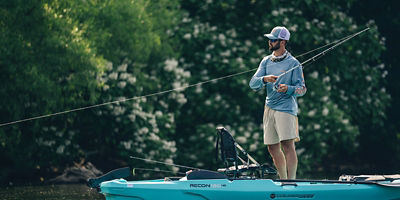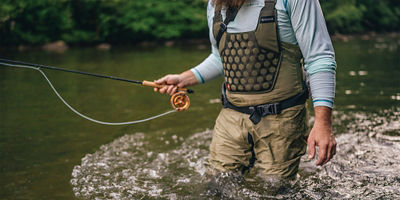
Anyone can be an angler. But it doesn’t take many casts, baited hooks, and weekends on the water to realize that fishing equipment itself—most notably a proper rod and reel combo plus complementary tackle—is only part of the equation for having a peaceful and enjoyable afternoon on the water.
You are the most important part of the fishing equipment you have. And to operate at your best, you need to arrive prepared. When you’re fishing on freshwater lakes and rivers, whether that be from shore, from a powerboat, or moving across the water under your own power on a fishing kayak, canoe or paddleboard, being outfitted and ready in the right outerwear to keep you comfortable, regardless of the season, is the surest way to set up success.
Freshwater Necessities
Regardless of species and no matter where you’re fishing (or what time of year), there are a few pieces of gear considered must-have.
Shirt & Shorts/Pants
While it can be appealing to fish with your shirt off, a sunburn and misplaced hook will quickly have you reconsidering your lack of wardrobe. Wear a lightweight, breathable shirt. Avoid materials like cotton that get wet and stay wet; instead, utilize quick-dry performance fabrics like polyester or a similar synthetic blend (merino wool layers also add odor resistance). Consider a long-sleeve shirt for even better protection from the sun and look for materials with UPF-rated fabrics to keep you from getting burned through thin layers.
On your lower half, pick a pair of shorts or pants that you can comfortably sit, stand and move in all day. Much like your shirt, layers made of a UPF-rated material will keep you from getting burned (or needing to put down a rod to apply sunscreen). Avoid pants made from cotton (like jeans or sweatpants). Instead, opt for a higher-performing fabric like nylon or polyester that will keep you warmer and drier.
You probably already know that fishing often requires a lot of gear. So, when in doubt, get pants with more pockets that allow you to carry everything you need.
Hat and Sunglasses
You’ll be battling fish, but you’ll also be battling the sun over the course of a day on the water. Add some basic protection with a hat that keeps the sun out of your eyes and off of your face. A pair of sunglasses can save you from an errant hook and also help you from squinting all day, straining your vision as the sun bounces off the water. Better yet, polarized lenses allow you to see through the water to the river bottom and spot fish swimming below.
Fishing Jacket or Vest
A fishing vest or jacket covered with pockets is an effective way to contain all of your fishing gear, keeping it easily at hand without having to lug around a tackle box or fumble with armloads of lures and spare tools. Look for jackets and vests with easy-access front pockets so you can actually grab what you need.
Some jackets and vests will even feature fold-down trays to organize and view necessary tackle or flies all at once (especially helpful for the fly anglers out there).
Rain Gear
Don’t be scared away by a light drizzle. A rain coat that you’d use for hiking will likely be enough for most fish outings, but look into a fishing-specific raincoat that allows you to move your arms to cast—and that fits over your loaded fishing vest.









